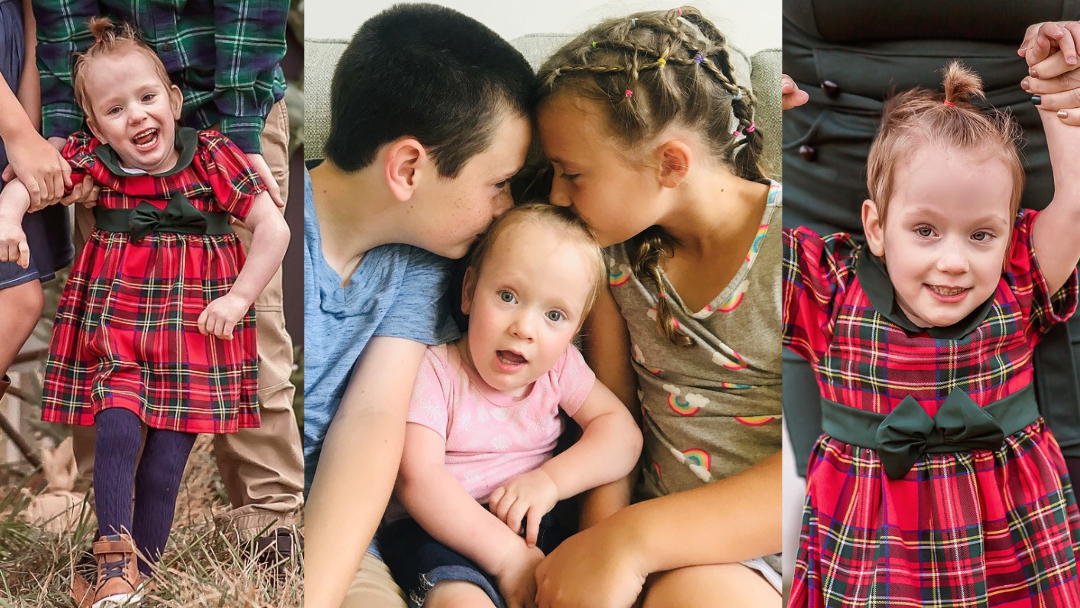Share this article :
Stacey Mealy knew from the start that this pregnancy would be different. Expecting again at age 35, the Huntingtown, MD, mother of two was facing a high-risk pregnancy.
The first setback is a big one
All went well until 20 weeks when Stacey’s water broke. At the hospital she and her husband Chris were told that it was likely they were going to lose the baby – a girl they planned to name “Ava.”
One of the nurses pulled Stacey aside and said, “Don’t give up. You go home, and you lay down. And you don’t move.”
And that’s what she did. Chris, an engineer, built Stacey a bed on the first floor of the family’s home. Complete and total bedrest was prescribed along with a course of antibiotics. The goal was to make it to 22 weeks and five days, at which time Stacey’s pregnancy would be considered viable.
Six weeks of bedrest led to six weeks of research
Six weeks of complete bedrest were not easy for Stacey. Needing to keep her mind occupied, she began what would soon prove to be a life-changing research project.
“I was reading every day because I knew that Ava would be a micro-preemie baby. So, I wanted to learn everything about her condition – what the challenges would be and how we could improve her chances.”
One thing that became evident in her research was the importance of preserving a micro-preemie’s cord blood for possible future stem cell therapy.
Choosing newborn stem cell preservation
Complete bedrest paid off and Stacey was admitted to the hospital at 22 and a half weeks. While at the hospital, she reached out to her nurses about her interest in preserving Ava’s cord blood stem cells.
“Great,” they told her. “There’s actually a program with CBR® .” The nurses gave her a CBR, Cells for Life’s American sister company, Newborn Stem Cell Collection Kit that the care team would keep close in the likely event of pre-term labor.
Stacey says what really convinced her was learning that her OB/GYN preserved for her now 17-year-old son’s newborn stem cells.
Off to a challenging start
Baby Ava was delivered by emergency C-section at 26 weeks due to an infection. Though she only weighed two pounds at birth, Ava’s delivery team was able to provide a usable cord blood stem cell sample.
The first 87 days of Ava’s life were spent in an NICU after a brain scan revealed unusual bleeding. An MRI confirmed that Ava had hydrocephalus, an abnormal buildup of fluid in the cavities (ventricles) deep within the brain.
The condition may cause an abnormally large head, epilepsy, learning disabilities, and vision issues.1 The Mealys were devastated when the learned Ava’s MRI report indicated that she had suffered significant brain loss.
Stacey’s research offers hope
Ava’s hydrocephalus diagnosis didn’t come as a total surprise. During her research, Stacey learned that micro-preemies often had the condition, as a result of bleeding in the brain. She also learned that Duke University School of Medicine was at the forefront in using cord blood to treat hydrocephalus brain injury. Stacey and Chris immediately began contacting Duke with the hope of getting Ava into treatment.
Throughout the challenging first months of Ava’s life, her family focused on the hope offered by a cord blood stem cell infusion at Duke.
When the Mealys finally received approval from Duke for Ava’s infusion, Ava’s stem cells were then immediately sent to the medical center in North Carolina.
Ava’s cord blood stem cell infusion
Upon their arrival at Duke, Stacey was cautioned by Ava’s care team not to expect immediate results from the infusion. “They told me, if you see anything unusual, just know that it’s not the stem cells working so fast,” Stacey laughingly remembers.
Just 12 hours after the infusion, Ava – a now 7-month-old micro-preemie who had never moved before – rolled over for the very first time.
“When we got home that night, I put Ava on her belly. And she rolls over.” Stacey recalls. “I’m like, ‘No way,’ right. They told me it can’t be.”
Ava today
New advances took place over time. While none were as seemingly instantaneous as her rolling over for the first time, Ava’s progress has been slow but steady.
“I’m a true believer that those stem cells actually gave us a huge advantage,” Stacey says when considering the severity of Ava’s brain loss.
Despite many challenges and thanks to the Mealy family’s unceasing dedication, Ava was reading at a six-year-old level by age three. Today she is a spirited five-year-old who is learning to communicate non-verbally through eye gaze therapy. She knows colors, numbers, words, and even recognizes Presidents.
“I keep telling myself that it’s all the therapy and hard work,” Stacey continues. “But I keep coming back to those stem cells and the cord blood infusion.”
Research and the promise of tomorrow
The commitment to doing everything possible to protect their child’s health that led the Mealy family to newborn stem cell preservation continues even stronger today. Stacey and Chris work hard to remain abreast of the latest developments in hydrocephalus research in their quest to help Ava live her best possible life. †
Expecting a child? Have friends or family who are expecting? Enroll with us today or visit our Refer A Friend page to start referring. When someone you refer preserves with Cells for Life, you’ll get a cheque or storage credit — and they’ll receive an exclusive discount when they enroll to store their baby’s stem cells.
References:
1. “Hydrocephalus Fact Sheet,” National Institute of Neurological Disorders and Stroke, April 2020, https://www.ninds.nih.gov/hydrocephalus-fact-sheet.
†Others may not experience the same results as Ava. Your physician or other healthcare provider should be consulted about your particular situation.

